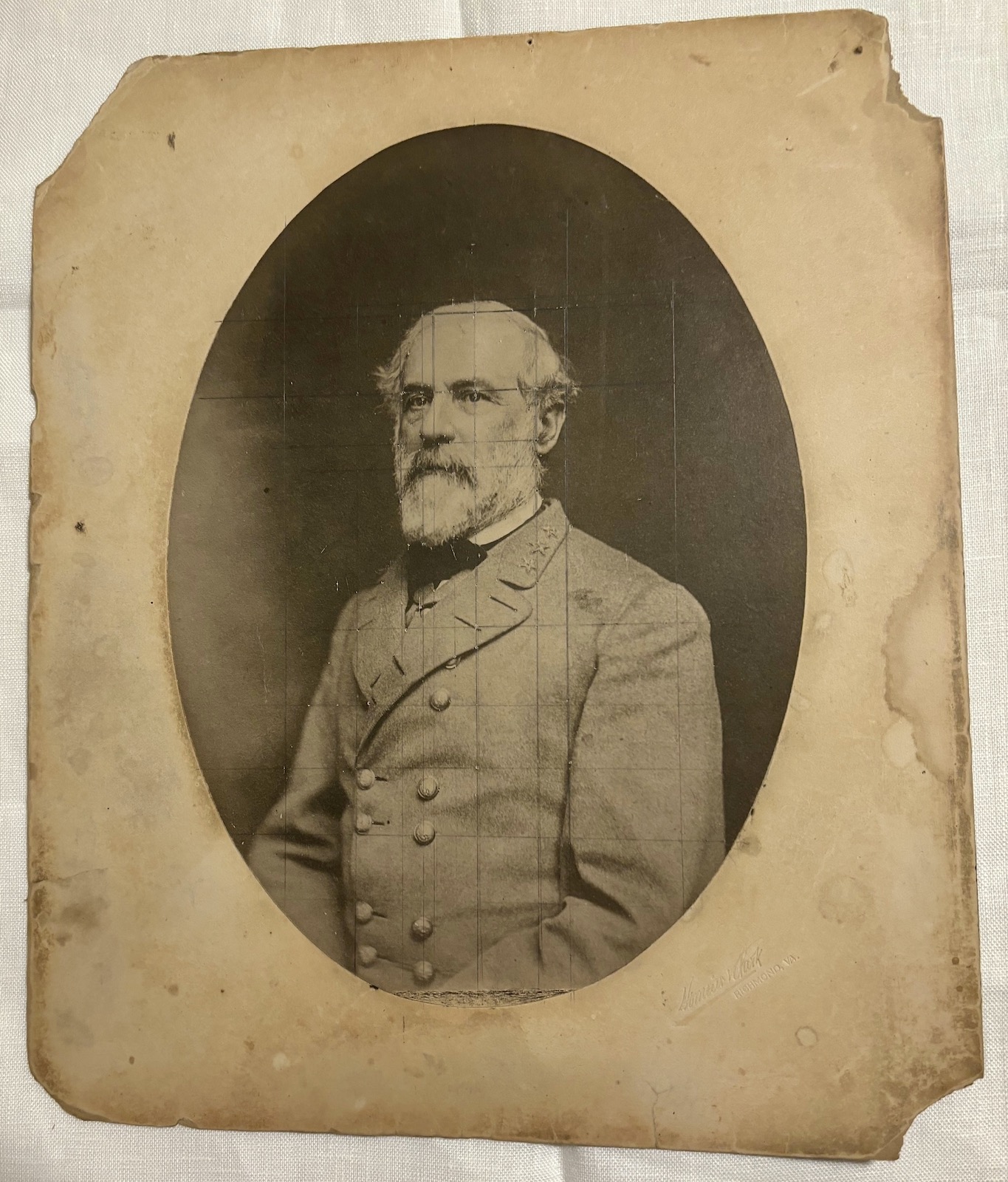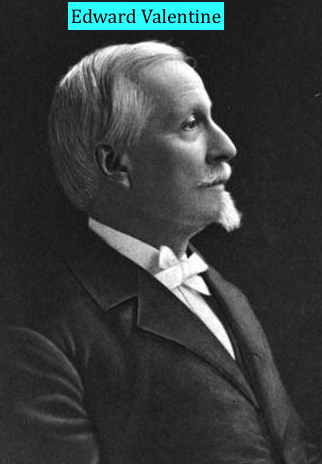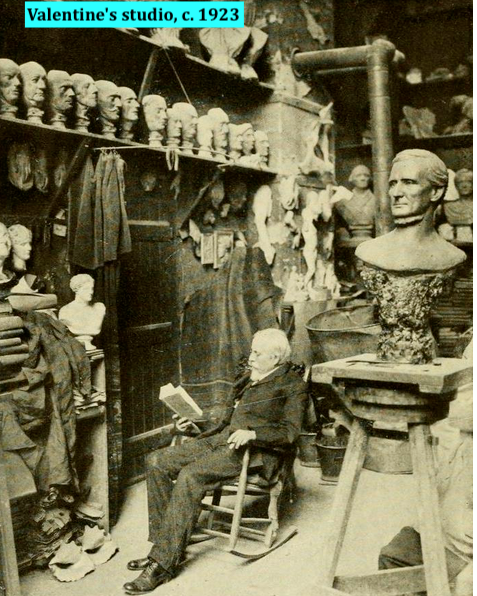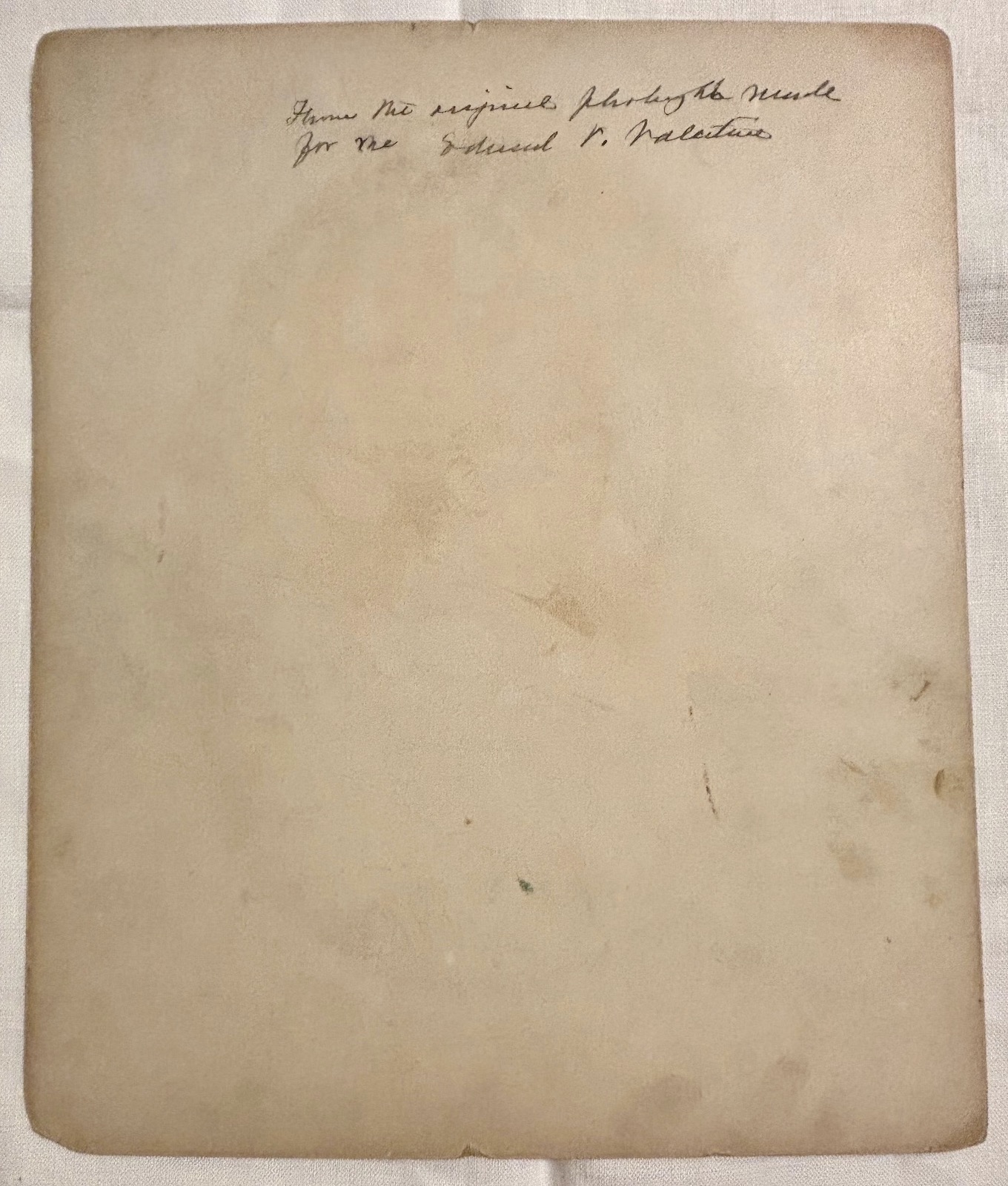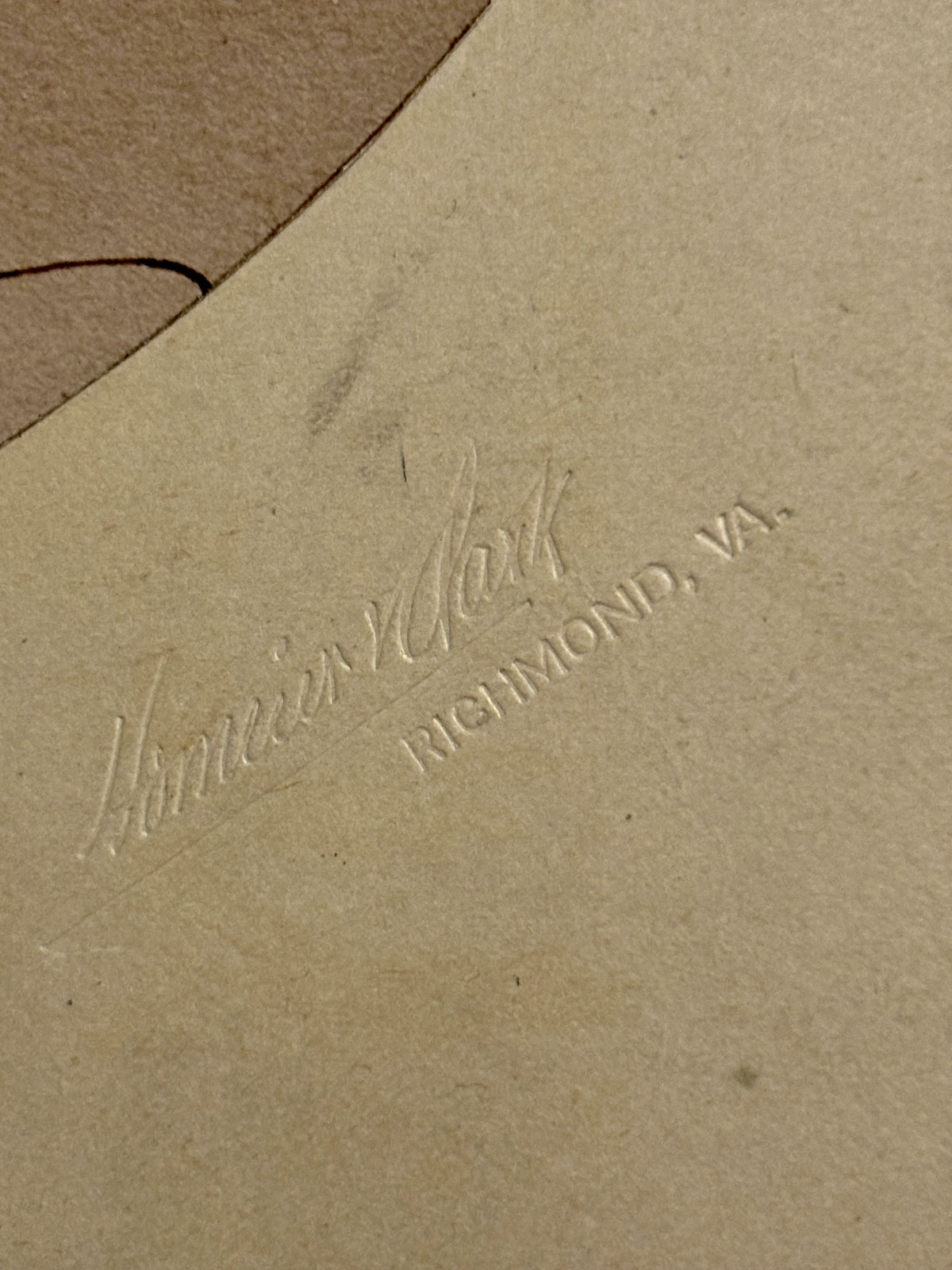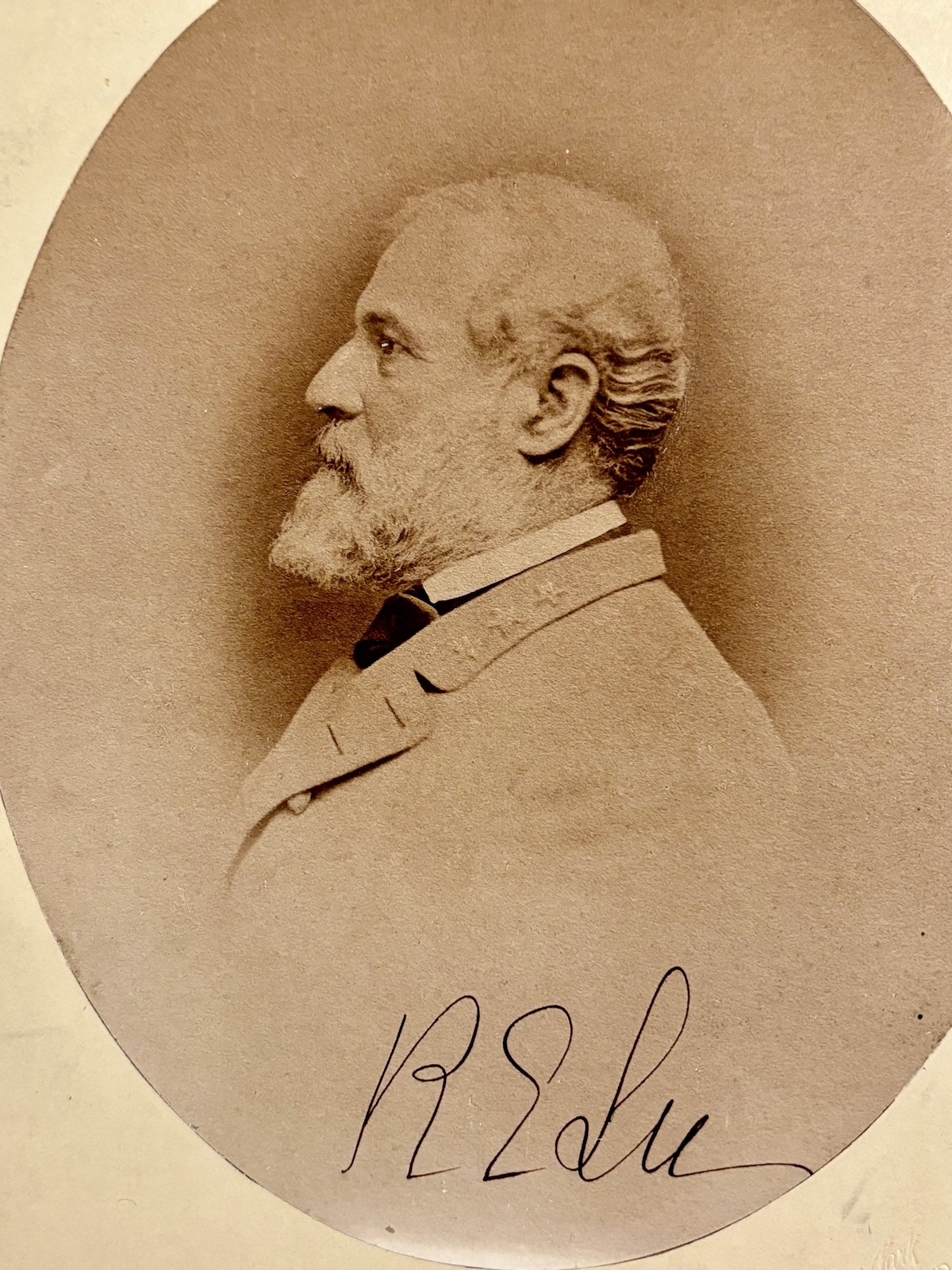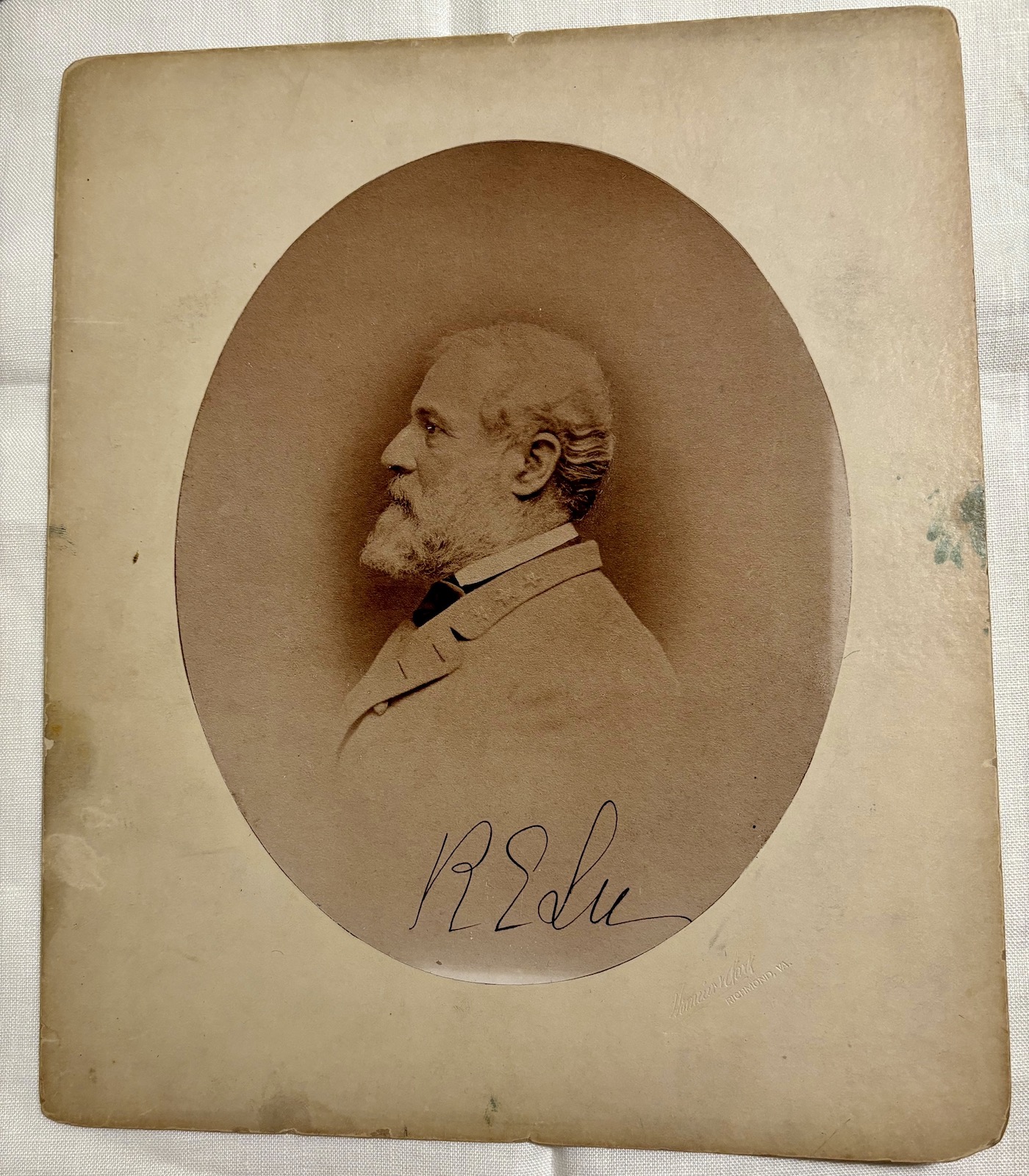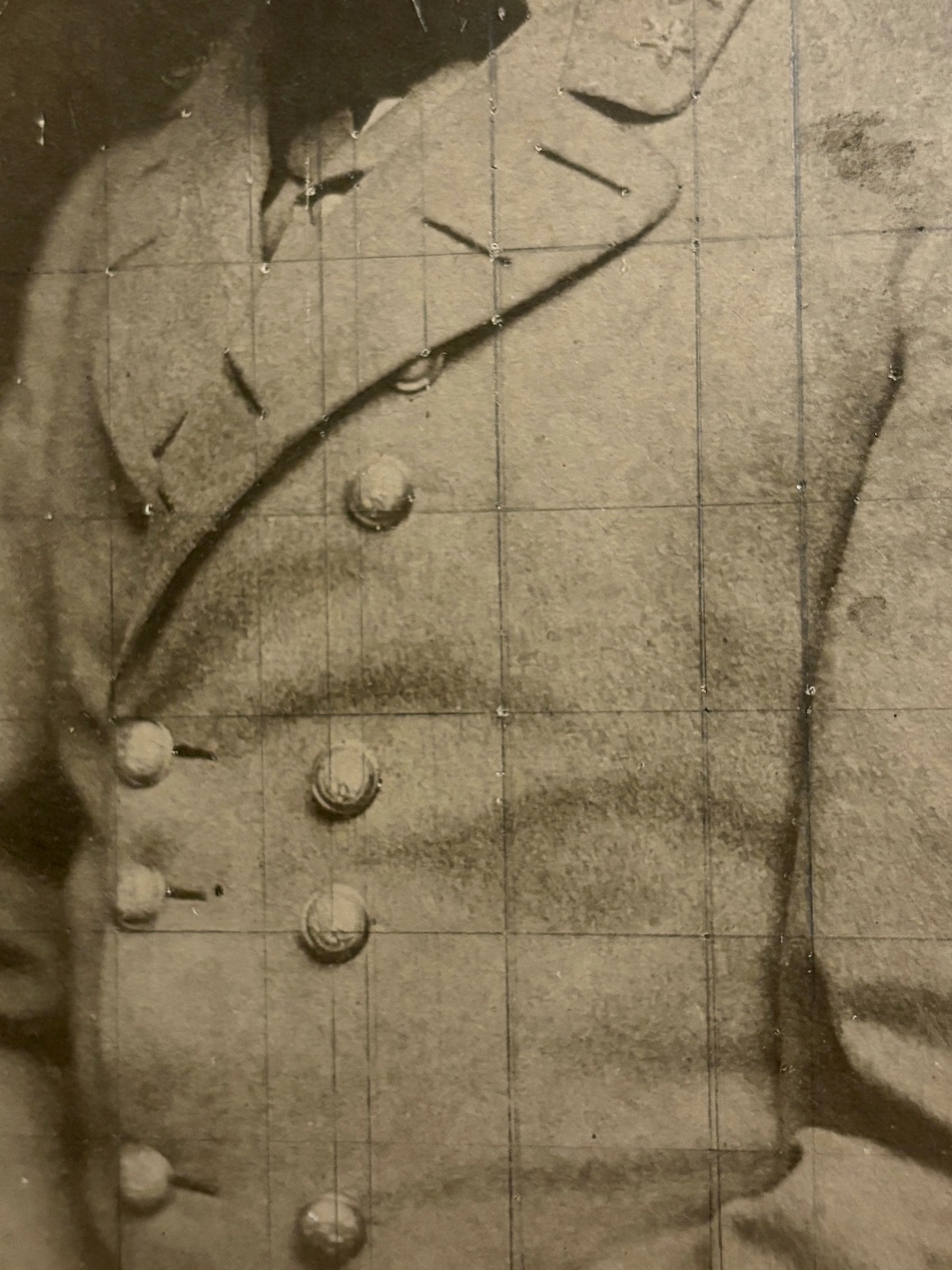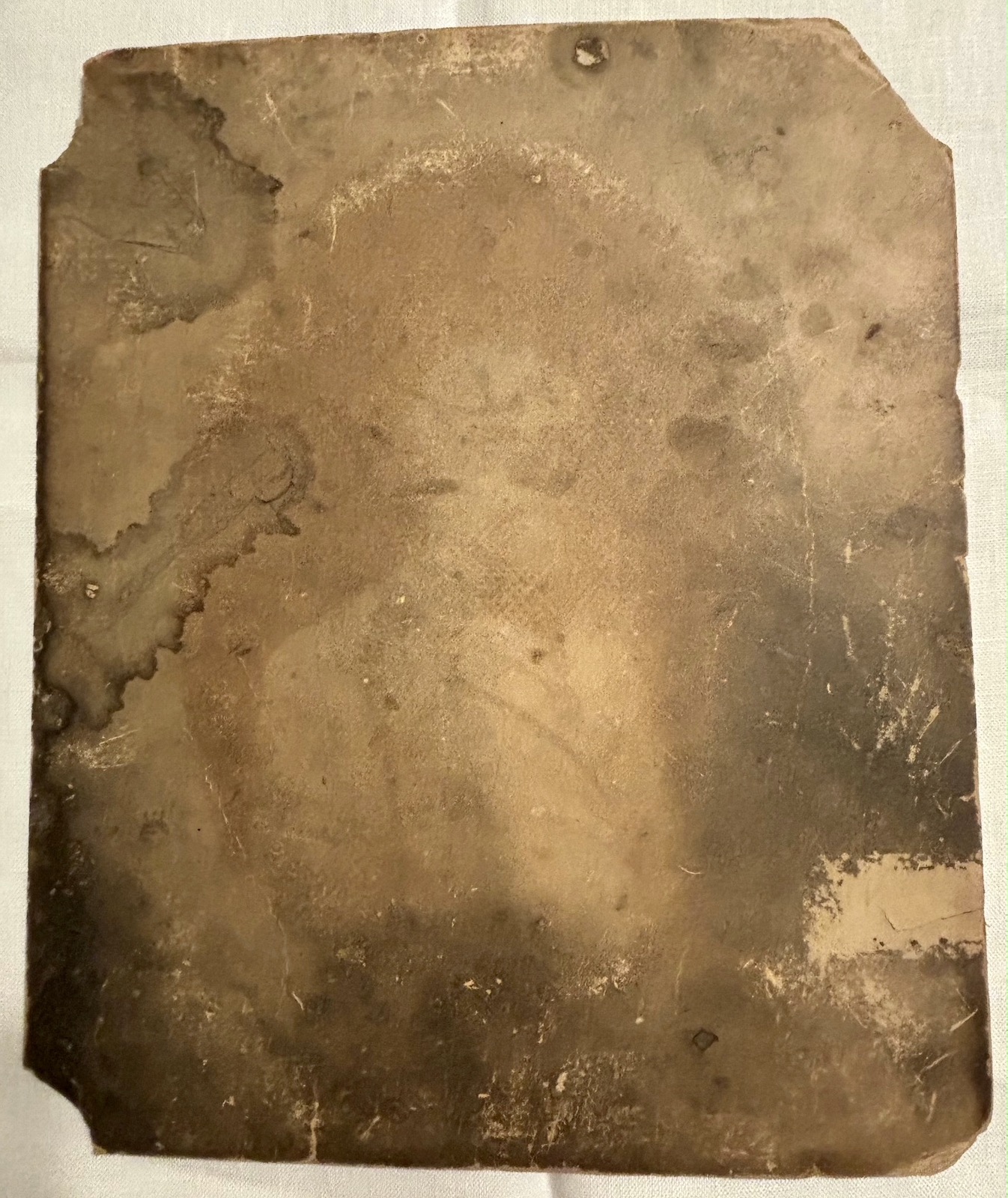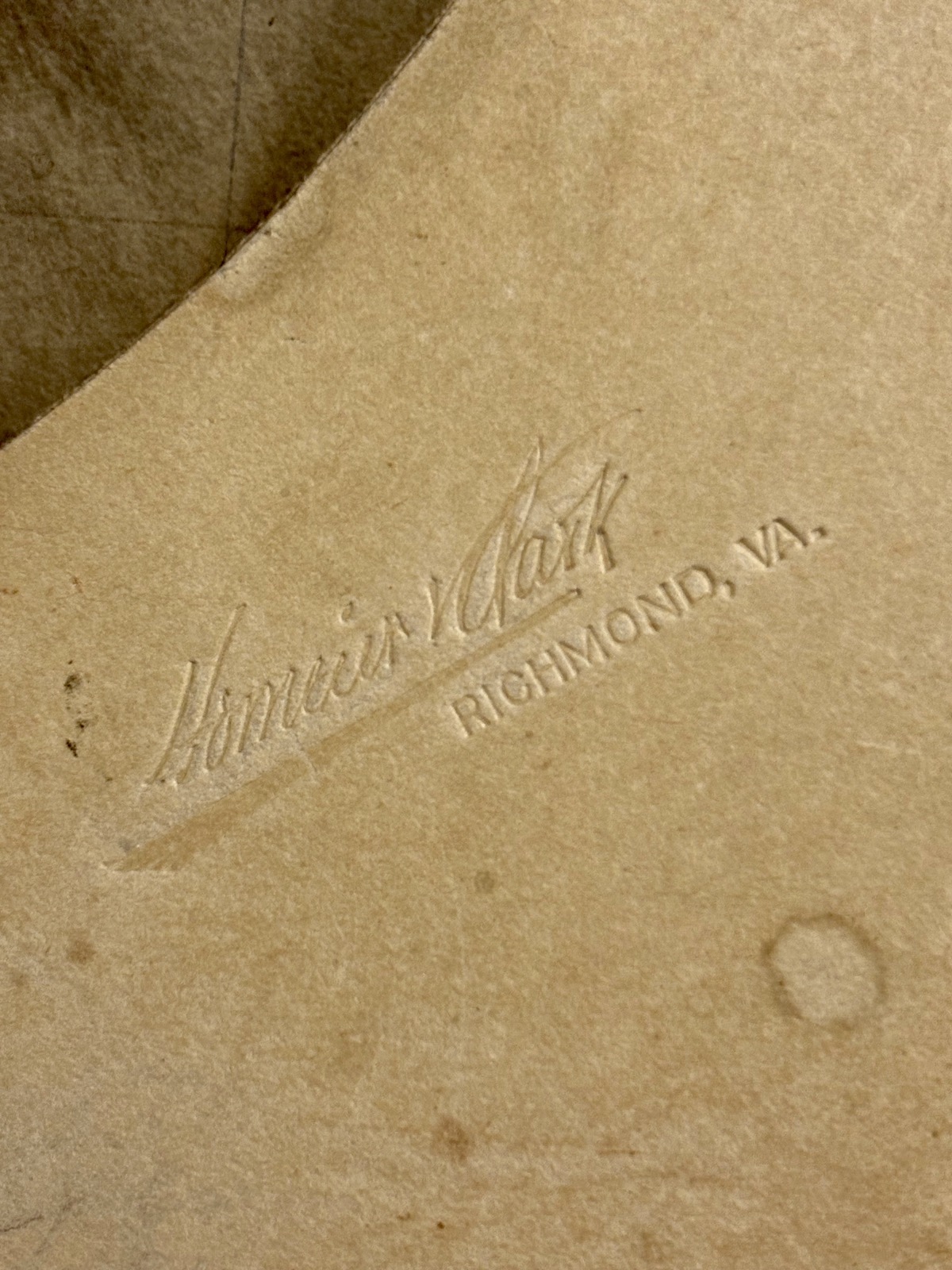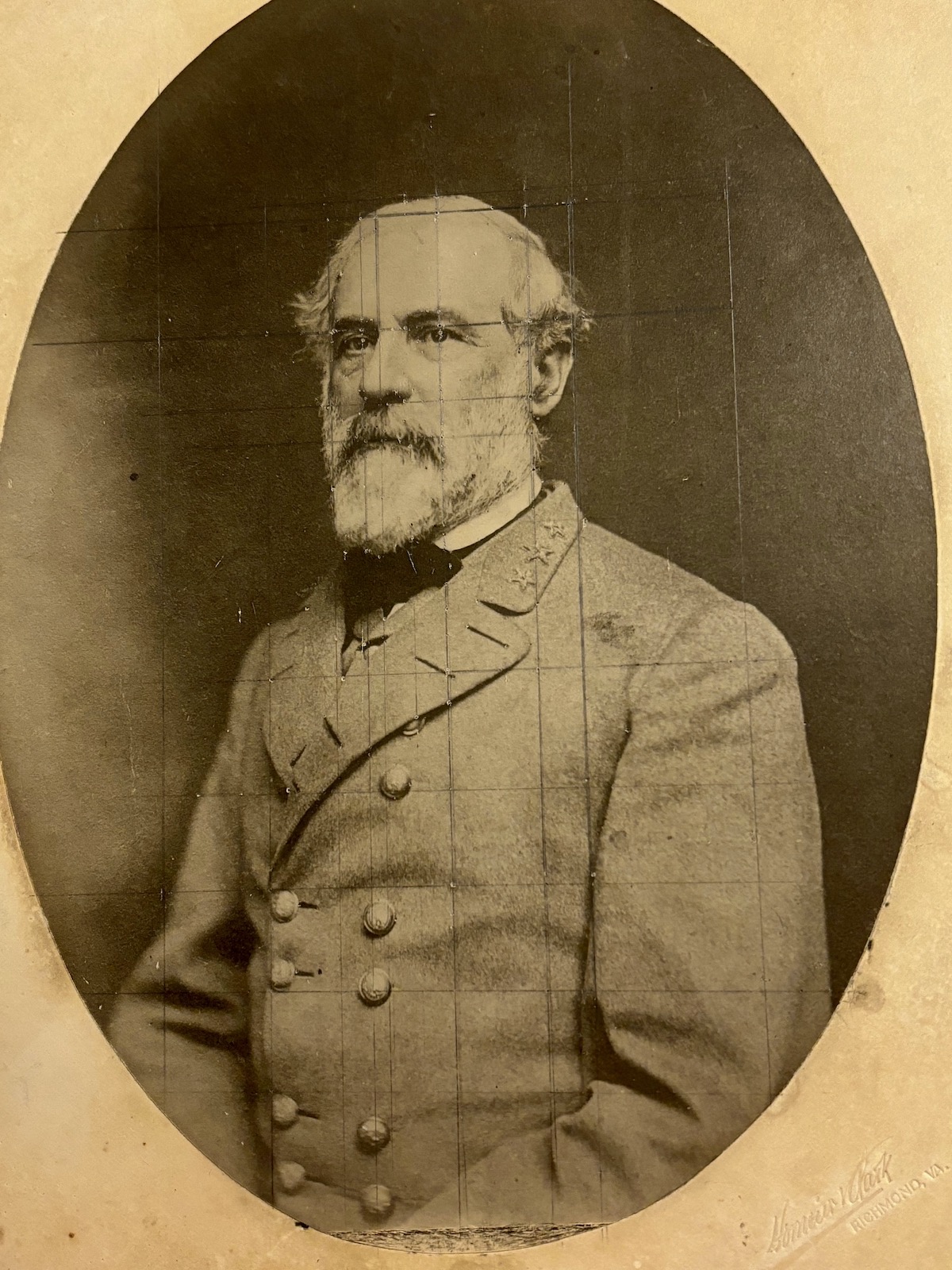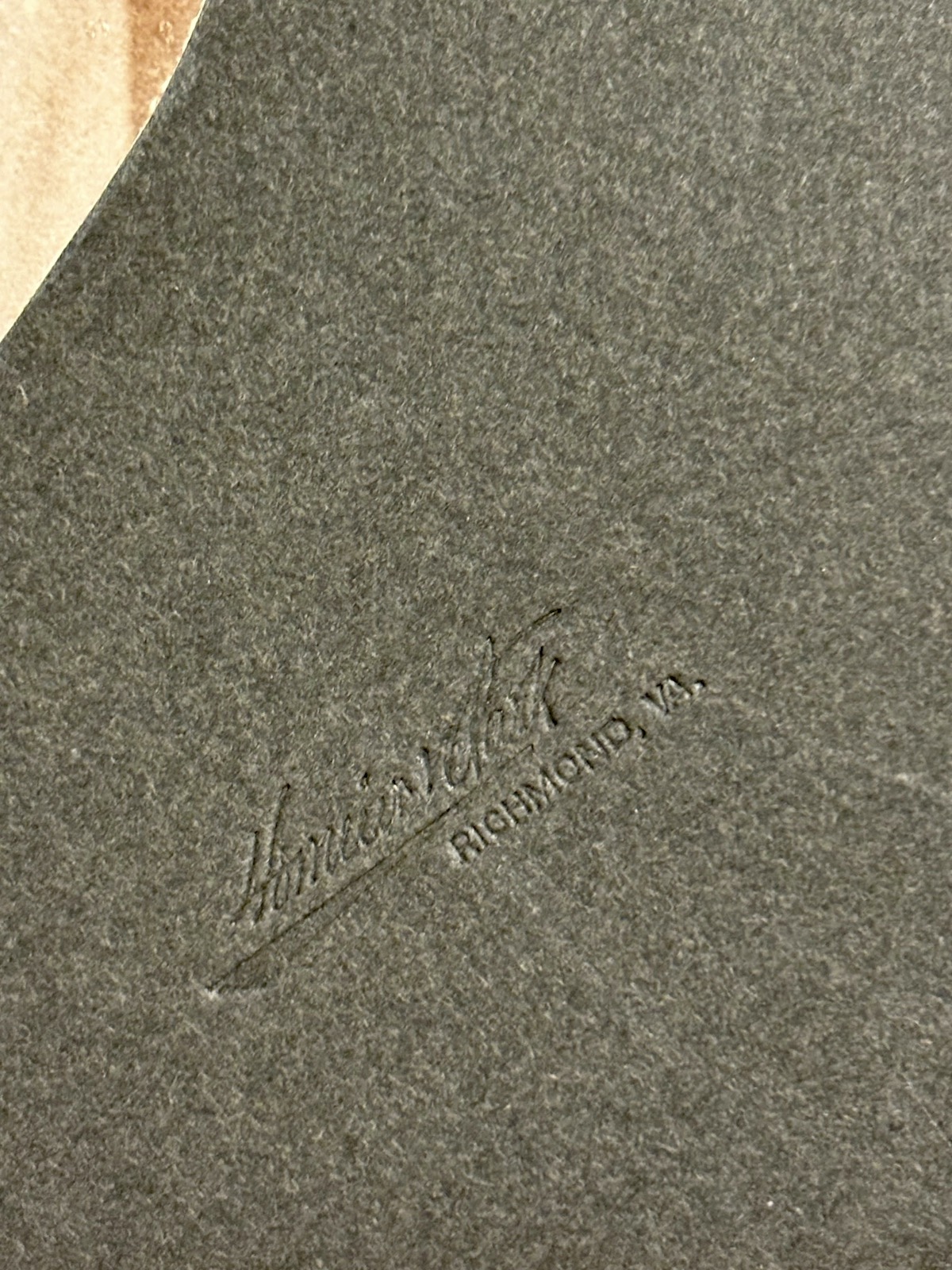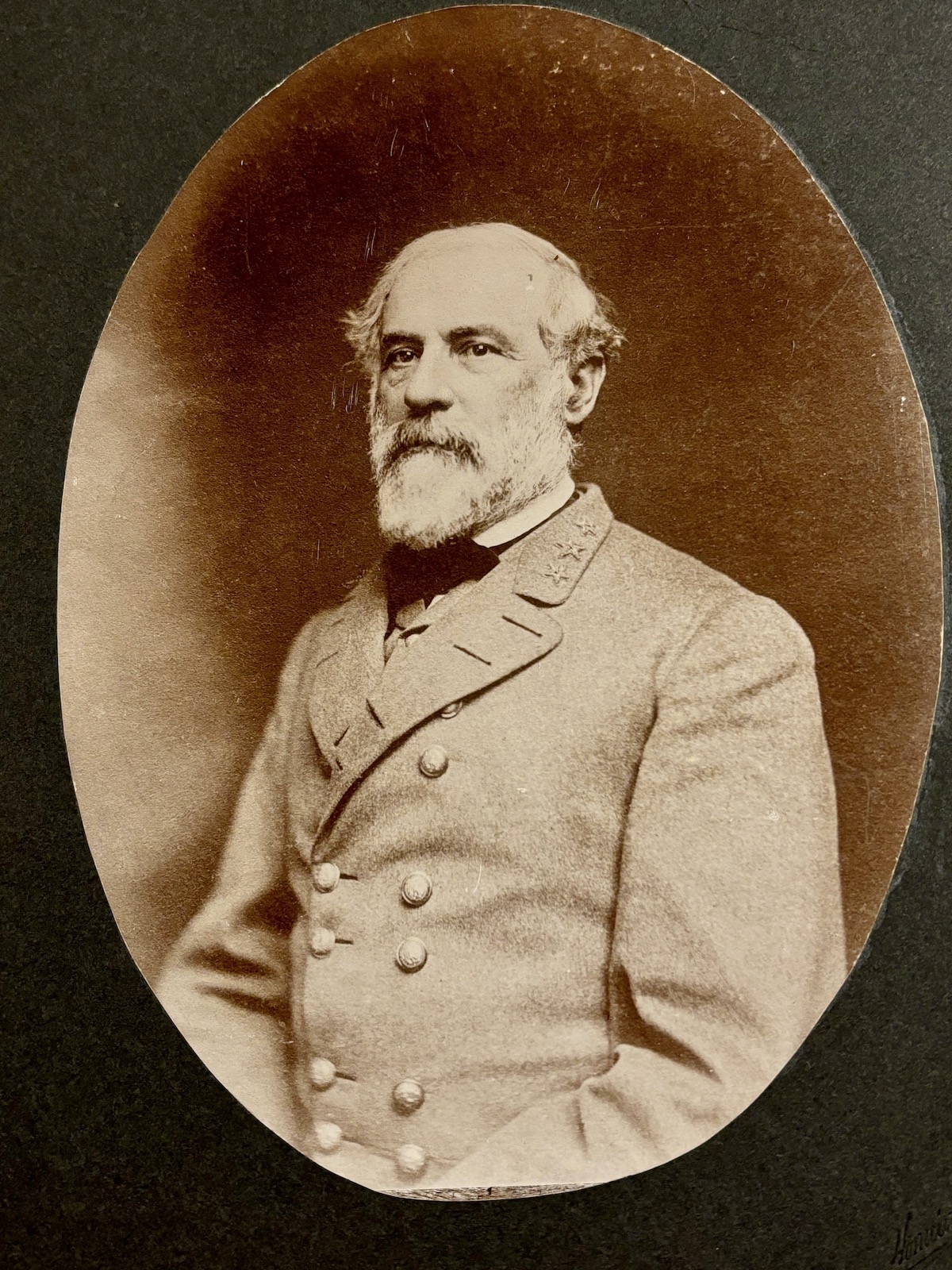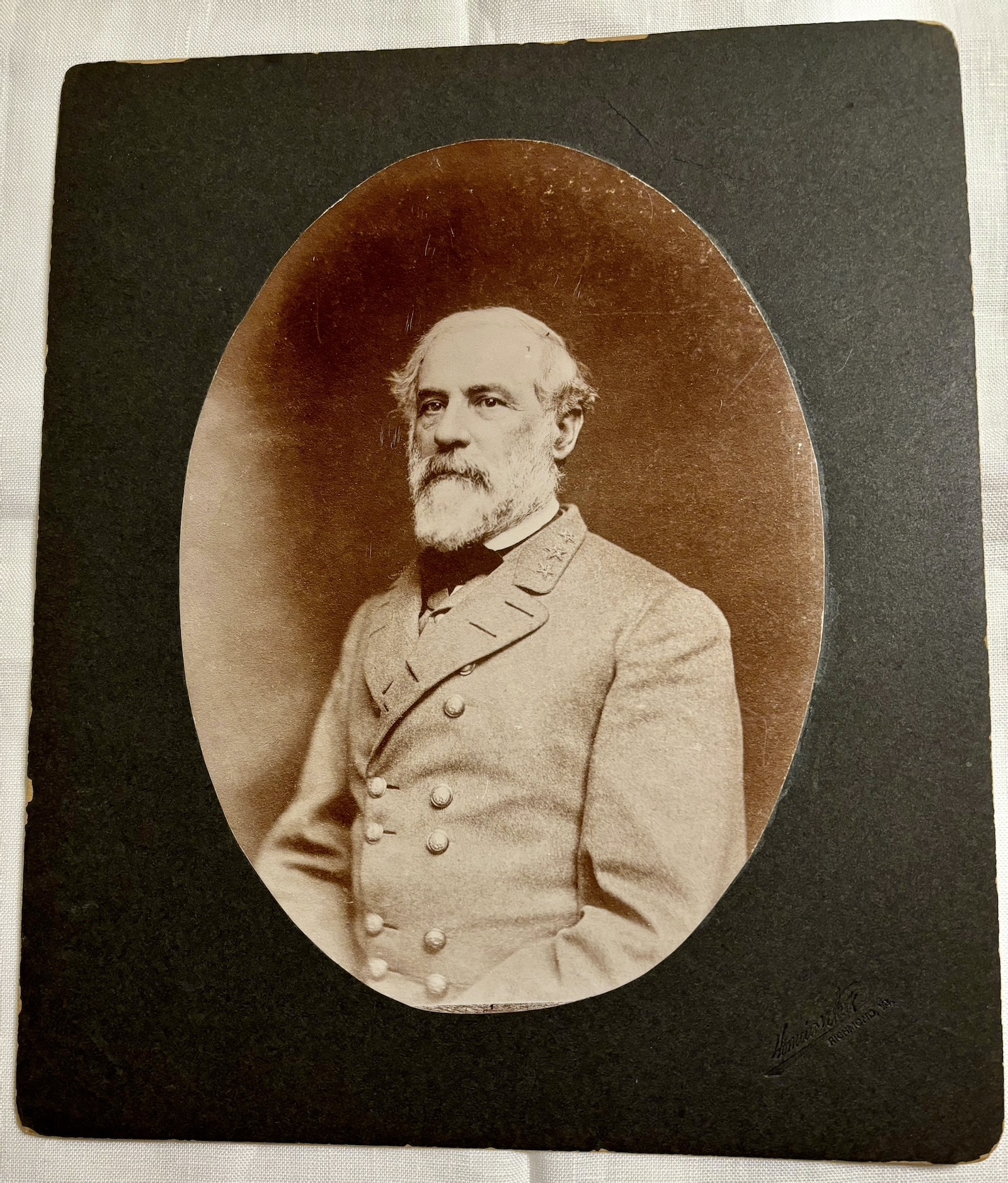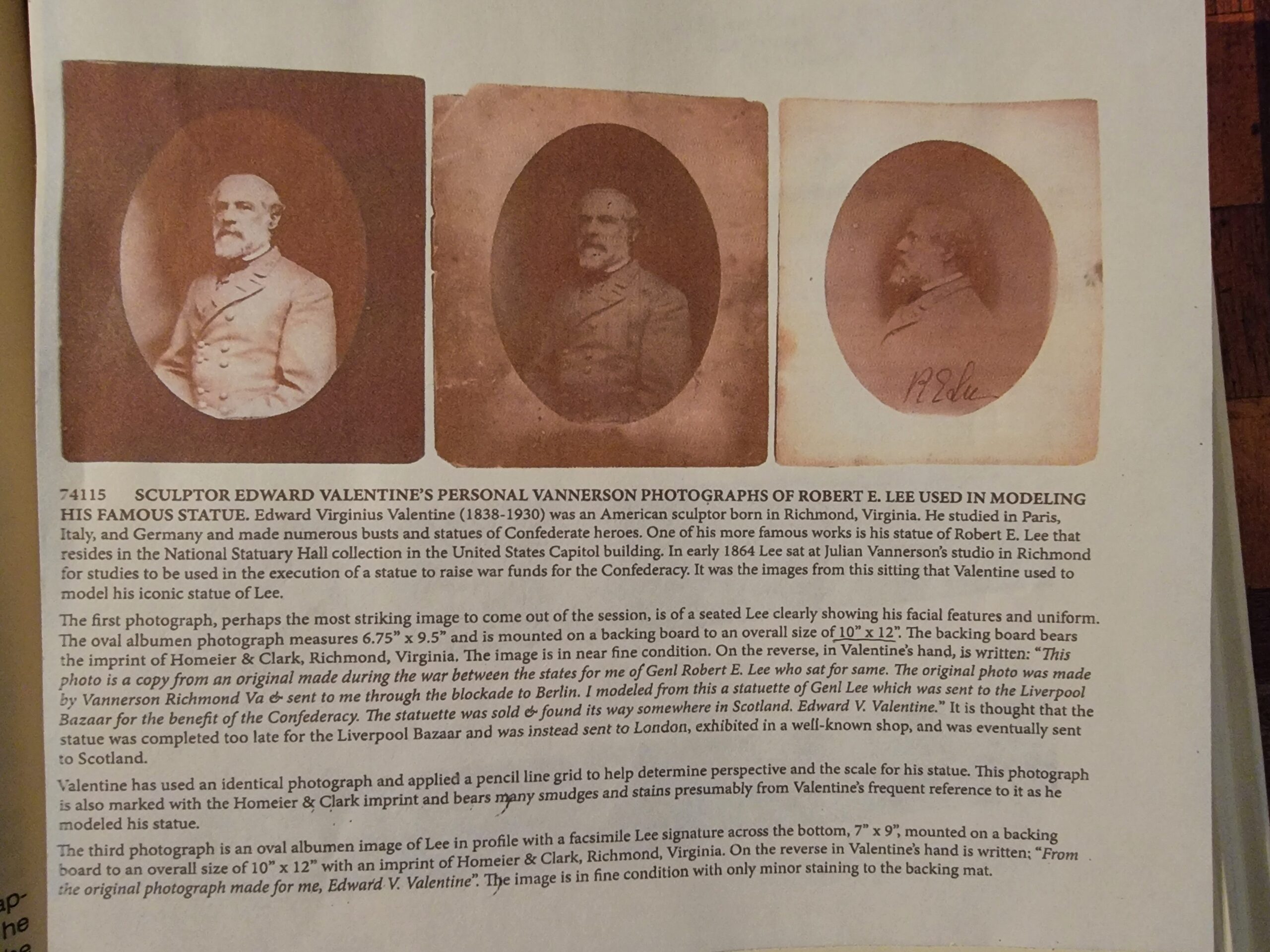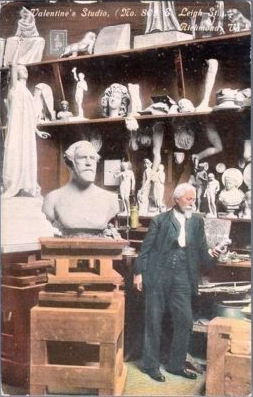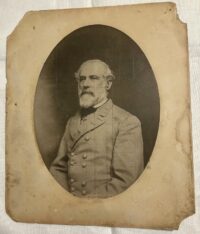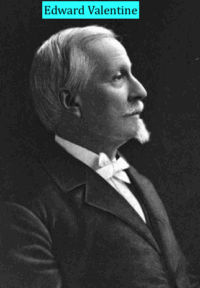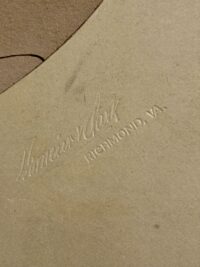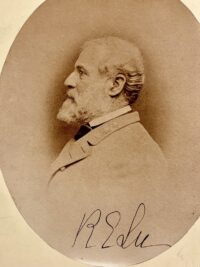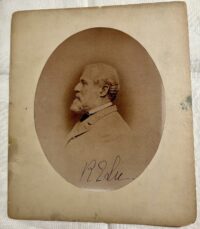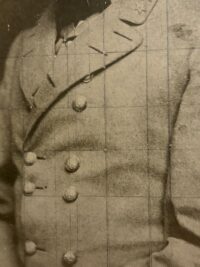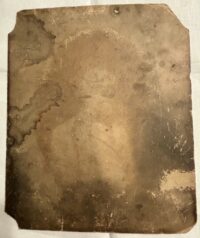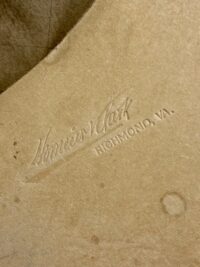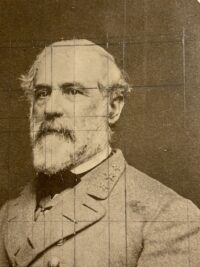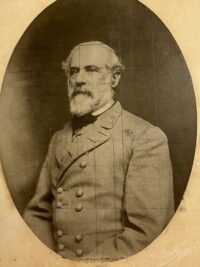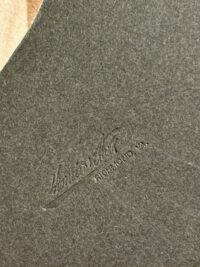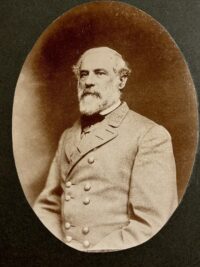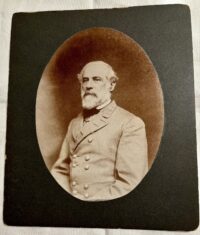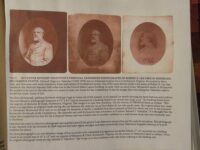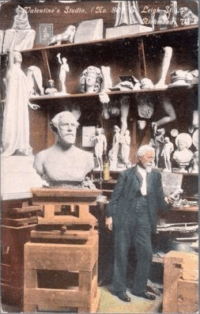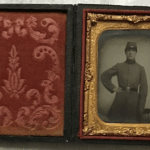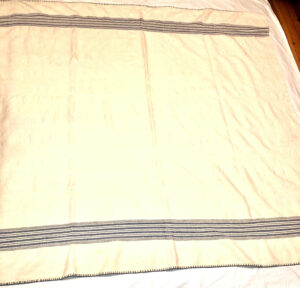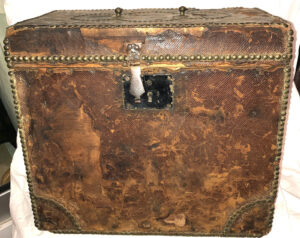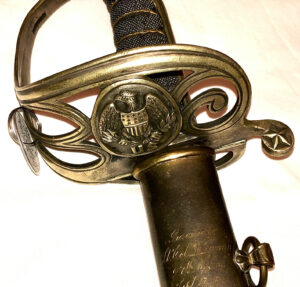Renown Richmond Sculptor Edward V. Valentine’s Personal Photographs of General Robert E. Lee Utilized by Valentine When Sculpting a Statuette of Lee
$4,200
NEW PRICING! Renown Richmond Sculptor Edward V. Valentine’s Personal Photographs of General Robert E. Lee Utilized by Valentine When Sculpting a Statuette of Lee – Edward V. Valentine (1838-1930) was born in Richmond, Virginia and became an American sculptor of note. Valentine studied in Paris, Italy and Germany and would sculpt many busts and statues of Civil War, Confederate luminaries. Perhaps one of Valentine’s more significant works was his impressive statue of Gen. R.E. Lee which was formerly amongst other works residing in the National Statuary Hall in the U.S. Capitol building. General Lee sat for photographer, Julian Vannerson, at Vannerson’s Richmond studio, in 1864; the resultant images were to be used as studies for the Valentine sculpture; this study sculpture was intended to be sold, to raise needed monies for the Confederacy. The 1864, Lee photographs, produced by Vannerson, were used by Valentine to make a statuette of Lee, that became the basis for his larger work.
The initial image generated during Lee’s sitting at the Vannerson studio, is considered to be the most striking; it depicts a seated Lee, clearly illuminating the General’s facial features and his Confederate uniform. The oval albumen image, which measures 6.75” x 9.5”, is mounted on a period, cardboard backing, with an overall size of 10” x 12”. This backing board exhibits the imprint of “Homeier & Clark, RICHMOND, VA.” (late 19th century, Richmond photographic studio) on the front side of the mounting board. This image remains in excellent condition. On the reverse, written in ink, in Valentine’s hand is the following inscription:
“This photo is a copy from an original made
during the War between the States for me of Genl
Robert E. Lee who sat for same.
The original photo was made by
Vannerson Richmond & sent to me through the
blockade to Berlin.
I modeled from this a statuette
of Genl Lee which was sent to the Liverpool
Bazaar for the benefit of the Confederacy.
The Statuette was sold & found its way
somewhere in Scotland.
Edward V. Valentine”
Research indicates that Valentine’s statuette may have been completed too late to be sold at the Liverpool Bazaar; it was apparently, subsequently sent to London, where it was exhibited in an established shop, sold and sent to Scotland.
The second photograph of Gen. Lee, an identical copy of the above-described image, also retaining the “Homeier & Clark, RICHMOND, VA.” imprint on the front side of the mounting board, exhibits Valentine’s penciled grid lines, used by the sculptor to determine perspective and scale for his creation of the statuette. This image shows several smudges and stains, more than likely generated by Valentine, as he frequently referred to the image and his perspective / scale lines as he worked on the Lee statuette. This image measures as follows: 9.5” x 7”; mat board backing – 12” x 10”.
The third, accompanying image of Gen. Lee, is an oval albumen of Lee, in profile; it has a facsimile signature of Lee’s, across the bottom of the image. This image measures 7” x 9” and is affixed to a heavy, cardstock backing board, resulting in an overall measurement of 10” x 12”. On the front of the backing board, is the imprint of “Homeier Clark, RICHMOND, VA.” On the reverse side of this image, inked in Edward Valentine’s hand, on the backing board, is the following:
“From the original photograph made
for me Edward V. Valentine”
This image remains in excellent condition, with some very minor staining to the backing mat.
The commemorative statue of General Robert E. Lee is a bronze sculpture by Edward Virginius Valentine that was installed in the crypt of the United States Capitol, as part of the National Statuary Hall Collection after it was donated to the Federal Government, by the commonwealth of Virginia, in 1909.
Statue of Robert E. Lee (Valentine)
| Robert E. Lee | |
| The statue | |
| Artist | Edward Virginius Valentine |
| Medium | Bronze sculpture |
| Subject | Robert E. Lee |
| Location | Richmond, Virginia, United States |
Robert E. Lee is a bronze sculpture commemorating the general of the same name by Edward Virginius Valentine, formerly installed in the crypt of the United States Capitol as part of the National Statuary Hall Collection. The statue was given by the commonwealth of Virginia in 1909.[4] On December 21, 2020, the sculpture was removed from the grounds of the United States Capitol and relocated to the Virginia Museum of History & Culture.
Replacement
On January 2, 2020, Virginia governor Ralph Northam requested a bill to remove the statue from the U.S. Capitol building. The idea came from United States representatives Jennifer Wexton and Donald McEachin. “These statutes aimed to rewrite Lee’s reputation from that of a cruel slave owner and Confederate General to portraying him as a kind man and reluctant war hero who selflessly served his home state of Virginia,” Wexton and McEachin wrote in a letter to Northam. The pair suggested several potential candidates, including educator and orator Booker T. Washington and civil rights attorney Oliver Hill.
On December 16, 2020, the Commission on Historical Statues in the United States Capitol unanimously recommended that the Lee statue be replaced with a statue of civil rights activist Barbara Rose Johns as the Virginian representative within the collection. The statue of Robert E. Lee was removed from the National Statuary Hall five days later, on 21 December with Wexton, McEachin and Virginia United States Senator Tim Kaine in attendance. It was then transferred to the Virginia Museum of History & Culture.
| Edward Virginius Valentine | |
| Valentine in a 1906 publication | |
| Born | November 12, 1838 |
| Died | October 19, 1930 (aged 91)
Richmond, Virginia, U.S. |
| Resting place | Hollywood Cemetery |
| Occupation | Sculptor |
| Spouses |
Alice Churchill Robinson (m. 1872; died 1883) Katherine Cole Friend Mayo (m. 1892; died 1927) |
Edward Virginius Valentine (November 12, 1838 – October 19, 1930) was an American sculptor from Richmond, Virginia.
Early life and education
Edward Virginius Valentine was born on November 12, 1838, in Richmond, Virginia, to Elizabeth (née Mosby) and Mann Satterwhite Valentine. In 1853, he attended the Exhibition of the Industry of All Nations in New York City and he saw the August Kiss‘s Amazon Attacked by a Panther sculpture exhibited. The sculpture influenced Valentine to pursue a career in drawing and modeling.$ At the age of 18, he attended the Medical College of Virginia and he took anatomical studies and drew for plastic casts. In September 1859, he sailed to Europe. He studied in Paris with Thomas Couture and François Jouffroy, in Florence, Italy, under Bonanti, and with August Kiss in Berlin. He received a Doctor of Laws from Washington and Lee University.
Career
Valentine’s studio, c. 1923
In 1865, Valentine returned to Richmond and opened a studio.
He briefly headed the Valentine Richmond History Center, which was founded by his brother, Mann S. Valentine Jr. The Wickham-Valentine House, part of the Valentine Museum in Richmond is on the National Register of Historic Places and was named for him and his brother.
Personal life
Valentine married Alice Churchill Robinson on November 12, 1872. She died in 1883. He married Katherine Cole (née Friend) Mayo in 1892. She died in 1927. They had no children. Valentine was friends with French artist Charles Hoffbauer.
Valentine died on October 19, 1930, at his home in Richmond, Virginia. He was buried at Hollywood Cemetery.
Works
- Recumbent Lee, marble, Lexington, Virginia, 1875
- Stonewall JacksonMonument, bronze. Lexington Virginia, 1891
- Matthew Fontaine Maurybronze, 1869
- Statueof Williams Carter Wickham, bronze. Monroe Park, Richmond, Virginia, 1891, toppled June 2020
- General Hugh MercerMonument, Washington Avenue Historic District, 1906
- Robert E. Lee, Virginia Museum of History & Culture of the Virginia Historical Society, Richmond, Virginia, 1909. It was removed from the United States Capitol, Washington D.C.in 2020.
- Thomas Jefferson, marble, Jefferson Hotel, Richmond, Virginia, 1894
- Andromache and Astyanax, Richmond, Virginia
- Jefferson Davis Memorial, bronze, Richmond, Virginia, 1907, and New Orleans, Louisiana, 1911
- John James Audubon, bronze, New Orleans, Louis

